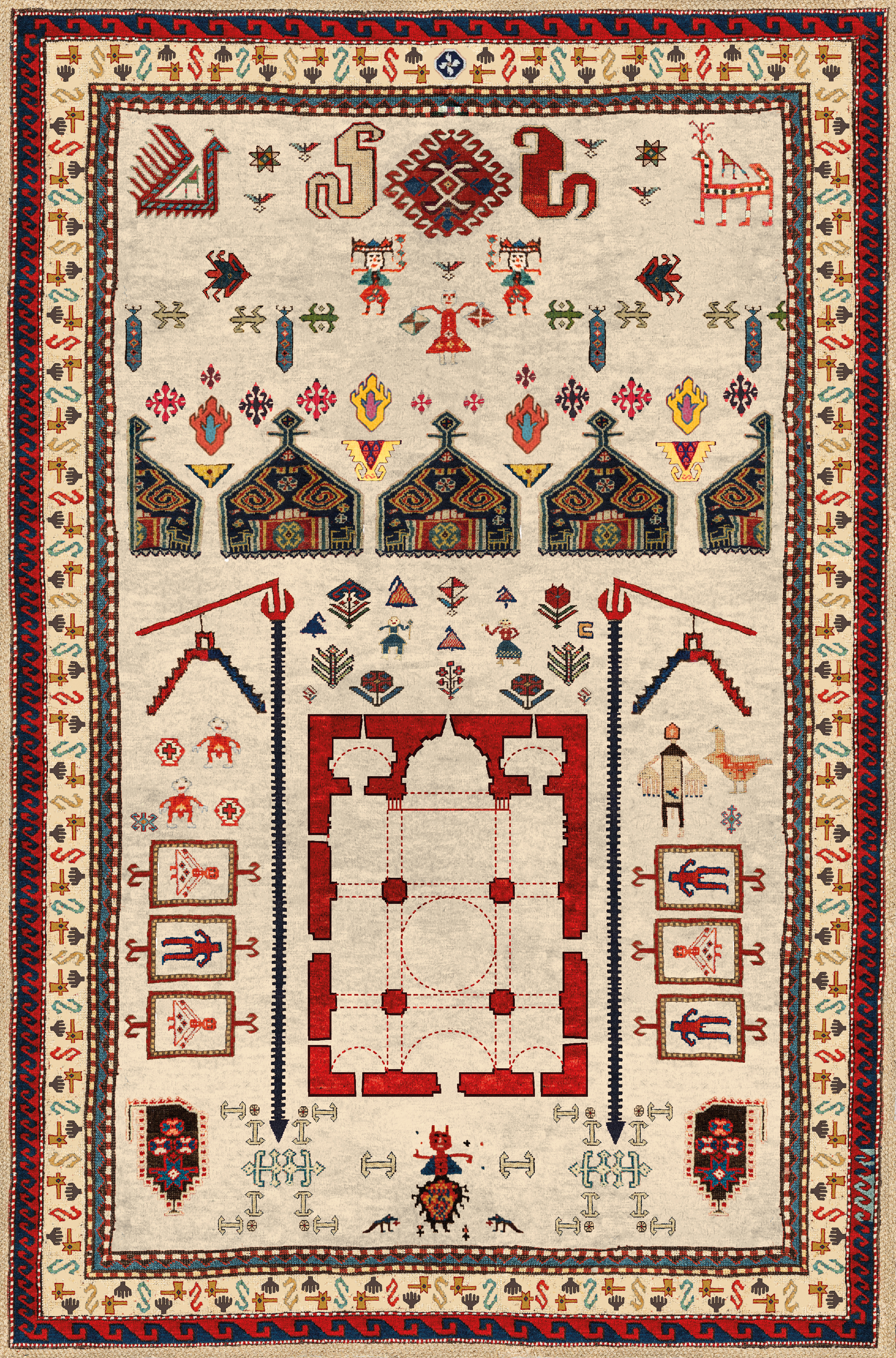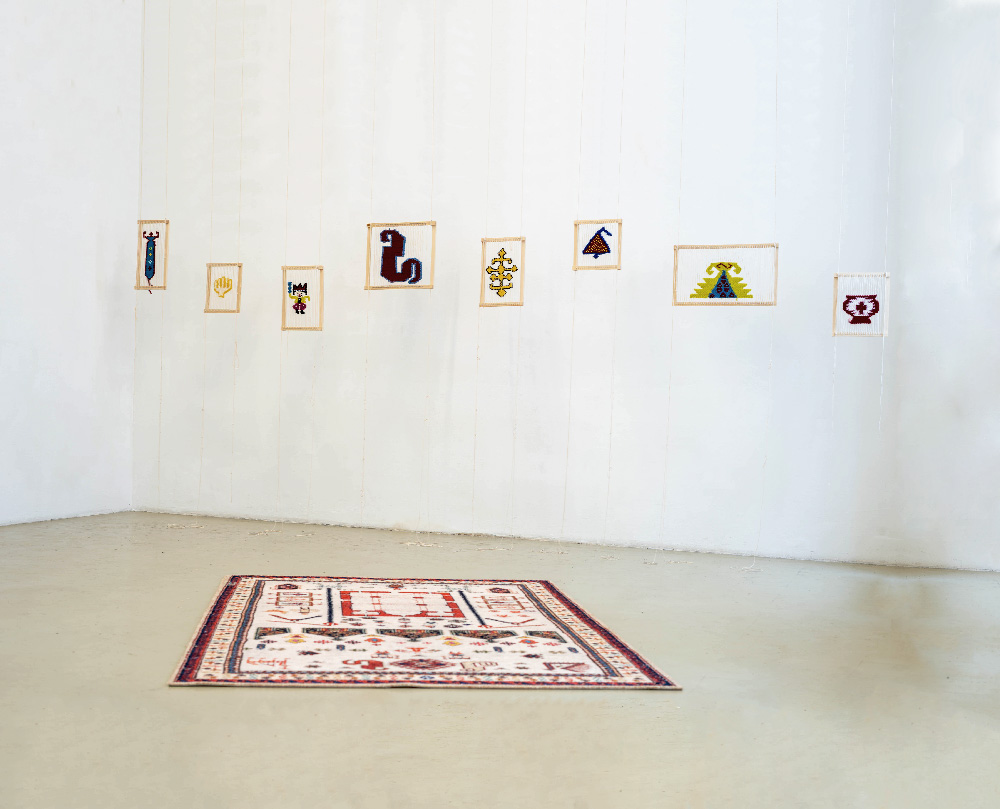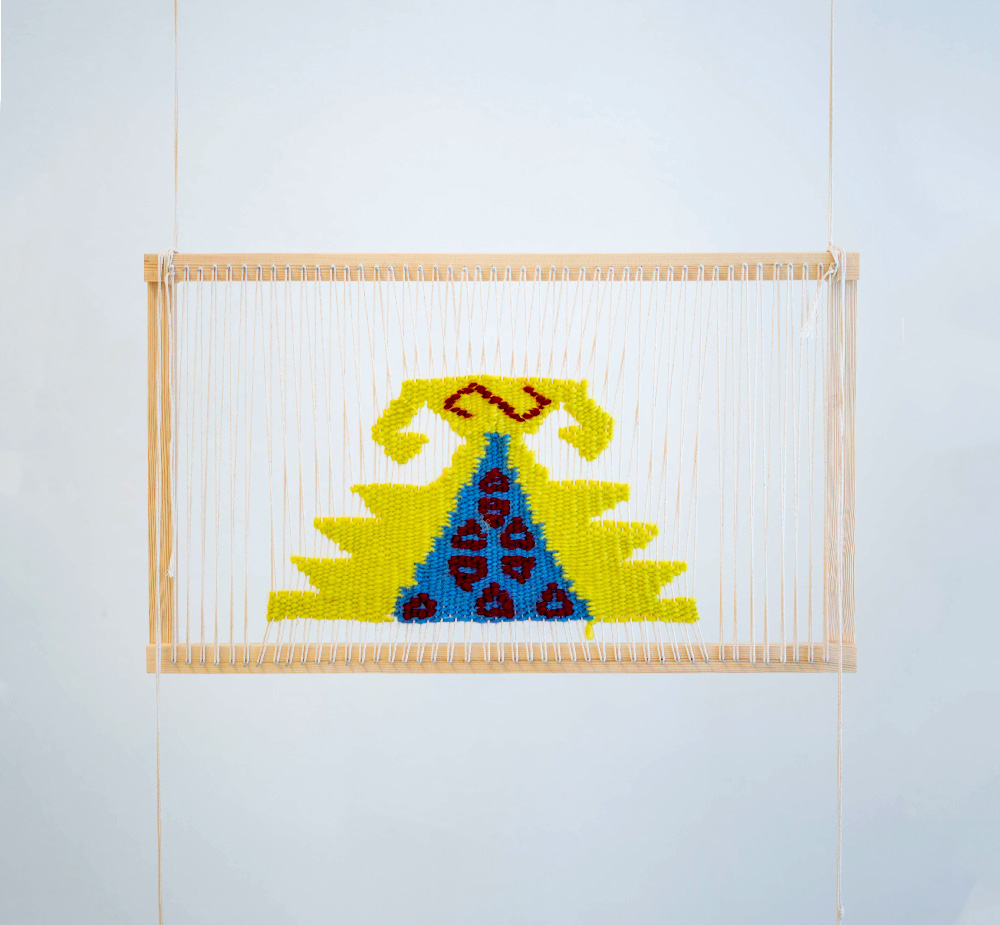Anpat tun
Installation, 2023
Materials: wool, wood, polyester
Rug: 100x150 cm
Loom rugs: 30-60 cm
home without walls | անպատ տուն | anpat tun is an overture to the linearity of symbols and their creation, as well as the chaos behind that ornamentalism. The symbols serve as tools of information – they can be extracted from their context, merged, and reinterpreted in various ways.
The work is based on the cultural genocide in Nakhidjevan - exclave of Azerbaijan, that was for centuries populated by various ethnicities including Armenians: but in the course of the last 20-30 years any trace of Armenian presence has been cleared out in order to rewrite history. The town of Agulis — an ancient Armenian cultural center, is the geographic reference for this work, with a focus on St. Tovma – 14th century monastery, one of the eight (originally twelve) churches of Agulis and 108 Armenian sites altogether in Nakhidjevan, that have been razed to the ground.
home without walls | անպատ տուն | anpat tun conveys this episode using the traditional rug symbols. The rug is an object that gives any space a feeling of home and safety. Beyond that it is a magic protector from evil spirits, curses and is a historical manuscript. Its beautiful and abstract symbols sometimes relate to stories of darkness, sorrow and suppression. In case of this work, the rugs are communicating the erased past of an entire community.
The installation consists of the main piece – a tufted illustrated rug with the main narrative and several looms with handwoven symbols. These symbols are tools of communication, depicting a history but keeping it within the realm of subjective perception. While the main carpet is a finished manuscript, the ornamental tools in the looms are left isolated with amissing background. This is an attempt to represent the ethereal origin of this symbolism. These symbols that are traditionally used on wall rugs, hang in the air.
Within the storytelling, the main depiction on the rug is the ground plan of the St. Tovma monastery, which was destroyed by Azerbaijani authorities and later replaced with a mosque. It signifies the emptiness and the space that has been occupied by a new entity. The same story can be told from both sides – once the church is destroyed, a mosque can be built, and vice versa. This repetition and mirroring aspect of the rug showcases how both sides juxtapose each other with subtle differences. In the end the soil takes both entities back inside of it.












